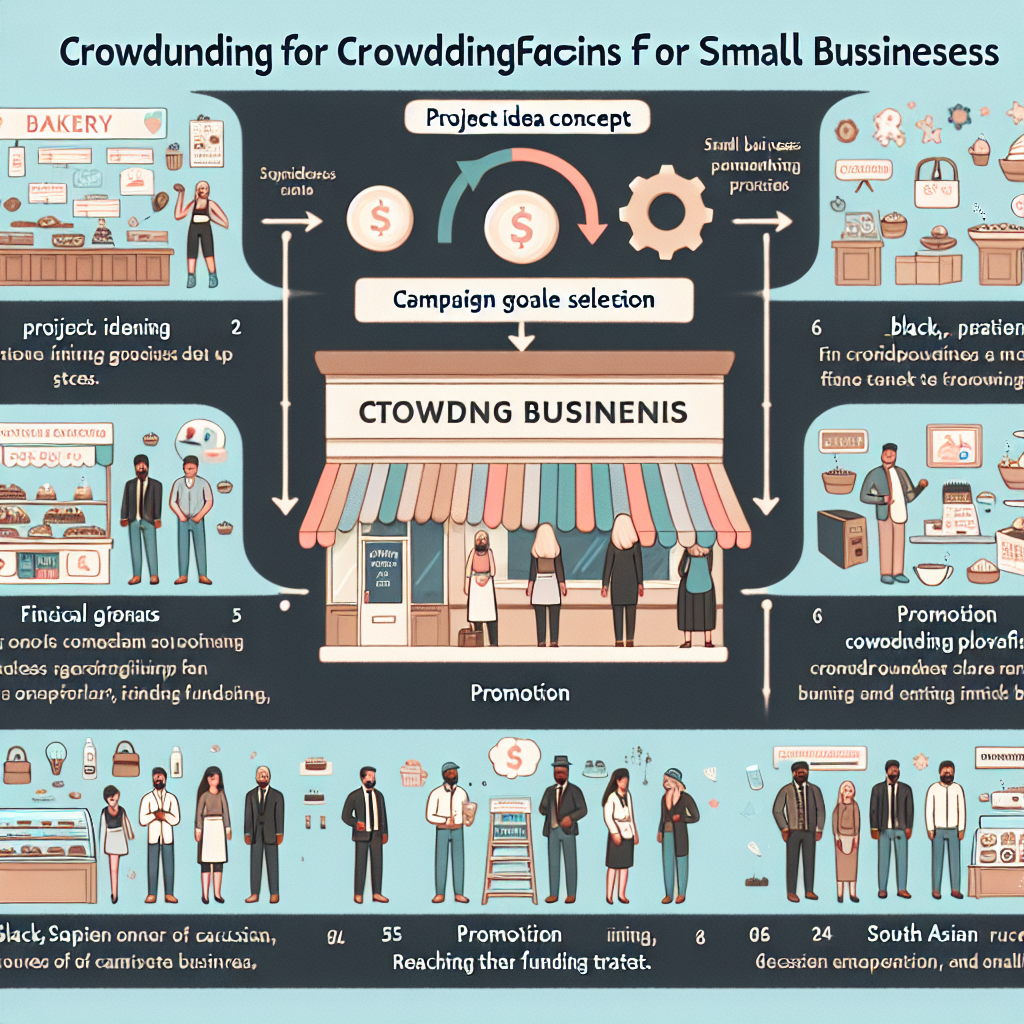Så använder du sociala medier för att öka ditt företags synlighet
Fördelarna med att använda sociala medier för att marknadsföra ditt företag
Sociala medier har blivit en viktig del av vår vardag och har också blivit ett kraftfullt verktyg för företag att marknadsföra sig själva. Genom att använda sociala medier kan du nå ut till en stor publik och öka din företags synlighet på ett kostnadseffektivt sätt. I denna artikel kommer vi att titta närmare på fördelarna med att använda sociala medier för att marknadsföra ditt företag.
En av de största fördelarna med att använda sociala medier är den stora mängden människor som du kan nå ut till. Med miljontals användare på plattformar som Facebook, Instagram och Twitter, har du en enorm potential att nå ut till din målgrupp och potentiella kunder. Dessutom är det enkelt att skapa ett konto och börja marknadsföra ditt företag på sociala medier, vilket gör det till ett tillgängligt alternativ för företag av alla storlekar.
En annan fördel med att använda sociala medier är den interaktiva naturen. Genom att dela innehåll och engagera dig med din publik kan du bygga en starkare relation med dina kunder. Detta kan leda till lojala kunder och positiva recensioner, vilket i sin tur kan öka ditt företags rykte och synlighet. Dessutom ger sociala medier dig möjlighet att få feedback från dina kunder och svara på eventuella frågor eller bekymmer som de kan ha. Detta kan hjälpa till att förbättra din kundservice och bygga ett starkare varumärke.
En annan fördel med att använda sociala medier är den möjlighet det ger dig att rikta in dig på en specifik målgrupp. Genom att använda funktioner som annonsering och målgruppssegmentering kan du nå ut till personer som är intresserade av dina produkter eller tjänster. Detta gör det möjligt för dig att få mer relevanta följare och potentiella kunder, vilket kan leda till en högre konverteringsgrad och ökad försäljning.
En annan fördel med att använda sociala medier är den möjlighet det ger dig att skapa och dela visuellt innehåll. Bilder och videor är ett kraftfullt sätt att fånga uppmärksamheten hos din publik och kan hjälpa till att sätta ditt företag i rampljuset. Genom att dela bilder och videor av dina produkter eller tjänster kan du visa upp deras kvalitet och locka potentiella kunder att prova dem. Dessutom kan du använda visuellt innehåll för att berätta din företagshistoria och skapa en personlig koppling med din publik.
En annan fördel med att använda sociala medier är den möjlighet det ger dig att samarbeta med influencers. Influencers är personer med en stor följarskara på sociala medier och kan hjälpa till att marknadsföra ditt företag till deras följare. Genom att samarbeta med influencers som är relevanta för din bransch kan du nå ut till en ny publik och öka din företags synlighet. Detta kan också hjälpa till att bygga ett starkare varumärke och öka din trovärdighet.
Slutligen är en annan fördel med att använda sociala medier den möjlighet det ger dig att mäta och analysera dina resultat. Genom att använda verktyg som Facebook Insights och Google Analytics kan du få insikt i hur dina inlägg och annonser presterar och hur din publik interagerar med ditt innehåll. Detta kan hjälpa dig att förbättra din marknadsföringsstrategi och göra justeringar för att nå bättre resultat.
Sammanfattningsvis finns det många fördelar med att använda sociala medier för att marknadsföra ditt företag. Genom att utnyttja den stora publiken, den interaktiva naturen, möjligheten att rikta in sig på en specifik målgrupp, skapa visuellt innehåll, samarbeta med influencers och mäta dina resultat, kan du öka din företags synlighet och nå ut till fler potentiella kunder. Så se till att inkludera sociala medier i din marknadsföringsstrategi och dra nytta av alla dess fördelar för att ta ditt företag till nästa nivå.
Hur du väljer rätt sociala medieplattformar för ditt företag
Sociala medier har blivit en viktig del av marknadsföringsstrategin för företag i dagens digitala värld. Genom att använda sociala medieplattformar kan företag nå ut till en bredare publik och öka sin synlighet online. Men med så många olika sociala medieplattformar att välja mellan kan det vara överväldigande att veta vilka som är rätt för ditt företag. I denna artikel kommer vi att titta på hur du kan välja rätt sociala medieplattformar för ditt företag och dra nytta av deras unika funktioner för att öka din synlighet.
Det första steget i att välja rätt sociala medieplattformar för ditt företag är att förstå din målgrupp. Vilken ålder, kön, intressen och beteenden har din målgrupp? Genom att ha en tydlig bild av din målgrupp kan du välja de sociala medieplattformar som bäst passar deras behov och preferenser. Till exempel, om din målgrupp är yngre och mer visuellt inriktad, kan Instagram och Snapchat vara de bästa plattformarna för ditt företag.
Nästa steg är att titta på vilken typ av innehåll ditt företag producerar. Om ditt företag fokuserar på visuellt innehåll som bilder och videor, kan Instagram och YouTube vara de bästa plattformarna för att nå ut till din målgrupp. Å andra sidan, om ditt företag producerar mer textbaserat innehåll som blogginlägg och artiklar, kan Twitter och LinkedIn vara mer lämpliga plattformar.
Det är också viktigt att tänka på vilken typ av relation du vill bygga med din målgrupp. Om du vill ha en mer personlig och interaktiv relation med din målgrupp kan Facebook och Twitter vara de bästa plattformarna. Dessa plattformar ger dig möjlighet att svara på kommentarer och interagera med dina följare på ett mer personligt sätt. Å andra sidan, om du vill ha en mer professionell relation med din målgrupp, kan LinkedIn vara den bästa plattformen för ditt företag.
En annan viktig faktor att överväga är vilken typ av produkter eller tjänster ditt företag erbjuder. Om ditt företag säljer fysiska produkter kan plattformar som Instagram och Pinterest vara effektiva för att visa upp dina produkter och locka till köp. Å andra sidan, om ditt företag erbjuder tjänster som konsultation eller coaching, kan LinkedIn vara en bättre plattform för att marknadsföra dina tjänster och nå ut till potentiella kunder.
Det är också viktigt att tänka på vilken typ av marknadsföringsbudget ditt företag har. Vissa sociala medieplattformar erbjuder annonseringsmöjligheter som kan hjälpa till att öka din synlighet, men det kan också vara en kostsam investering. Om ditt företag har en begränsad budget kan det vara bättre att fokusera på organisk tillväxt genom att skapa engagerande innehåll och interagera med din målgrupp på sociala medier.
Slutligen är det viktigt att tänka på vilken typ av konkurrens ditt företag har på olika sociala medieplattformar. Om dina konkurrenter är aktiva på en viss plattform kan det vara en bra idé att också vara närvarande där för att inte missa möjligheter att nå ut till din målgrupp. Å andra sidan, om dina konkurrenter inte är aktiva på en viss plattform kan det vara en möjlighet för ditt företag att sticka ut och nå ut till en ny publik.
Sammanfattningsvis är det viktigt att välja rätt sociala medieplattformar för ditt företag för att öka din synlighet och nå ut till din målgrupp. Genom att förstå din målgrupp, ditt företags innehåll och mål, samt konkurrensen på olika plattformar, kan du välja de sociala medieplattformar som bäst passar ditt företag och dra nytta av deras unika funktioner för att öka din synlighet online. Kom ihåg att det är en process av trial and error och att det är viktigt att ständigt utvärdera och anpassa din strategi för att få bästa möjliga resultat. Lycka till med att välja rätt sociala medieplattformar för ditt företag!
Strategier för att öka synligheten på sociala medier
Sociala medier har blivit en viktig del av vår vardag och det är ingen överraskning att det också har blivit en viktig del av marknadsföringen för företag. Genom att använda sociala medier på rätt sätt kan du öka ditt företags synlighet och nå ut till en större publik. I den här artikeln kommer vi att titta på några strategier som kan hjälpa dig att öka synligheten för ditt företag på sociala medier.
Först och främst är det viktigt att ha en tydlig målgrupp i åtanke när du använder sociala medier för marknadsföring. Genom att veta vilka dina potentiella kunder är kan du skapa innehåll som är relevant och intressant för dem. Detta kommer att öka chansen att de engagerar sig med ditt företag på sociala medier och i förlängningen leda till fler följare och potentiella kunder.
En annan viktig strategi är att vara aktiv och närvarande på sociala medier. Det räcker inte bara med att ha ett konto, du måste också regelbundet uppdatera det med relevant och intressant innehåll. Detta kan vara allt från produktlanseringar och erbjudanden till branschrelaterade nyheter och tips. Genom att vara aktiv visar du att ditt företag är engagerat och intresserat av att kommunicera med din målgrupp.
En annan viktig del av att öka synligheten på sociala medier är att använda rätt plattformar. Det finns många olika sociala medieplattformar där ute och det är viktigt att välja de som passar bäst för ditt företag och din målgrupp. Till exempel, om ditt företag säljer produkter som är visuellt tilltalande, kan Instagram vara en bra plattform att fokusera på. Om ditt företag riktar sig till en professionell publik kan LinkedIn vara mer lämpligt. Genom att välja rätt plattformar kan du nå ut till din målgrupp på ett mer effektivt sätt.
En annan viktig strategi är att samarbeta med influencers. Influencers är personer som har en stor följarskara på sociala medier och kan påverka sina följares köpbeslut. Genom att samarbeta med influencers som är relevanta för ditt företag kan du nå ut till en större publik och öka din synlighet på sociala medier. Det är viktigt att välja influencers som är trovärdiga och har en publik som matchar din målgrupp.
Att använda hashtags är också en viktig del av att öka synligheten på sociala medier. Genom att använda relevanta hashtags i dina inlägg kan du göra det lättare för potentiella kunder att hitta ditt företag. Det är viktigt att använda hashtags som är relevanta för ditt företag och din målgrupp. Du kan också skapa en unik hashtag för ditt företag som kan användas av dina följare och potentiella kunder.
Att engagera sig med din publik är också en viktig del av att öka synligheten på sociala medier. Genom att svara på kommentarer och meddelanden från dina följare visar du att du bryr dig om deras åsikter och att du är tillgänglig för kommunikation. Detta kan också leda till att dina följare delar ditt innehåll och rekommenderar ditt företag till sina vänner och familj.
Slutligen är det viktigt att mäta och analysera din närvaro på sociala medier. Genom att använda verktyg som Google Analytics eller plattforms-specifika analysverktyg kan du få insikt i hur ditt innehåll presterar och hur din publik interagerar med det. Detta kan hjälpa dig att anpassa din strategi och göra förbättringar för att öka din synlighet på sociala medier.
Sammanfattningsvis finns det många olika strategier som kan hjälpa dig att öka synligheten för ditt företag på sociala medier. Genom att ha en tydlig målgrupp, vara aktiv och närvarande, använda rätt plattformar, samarbeta med influencers, använda hashtags, engagera dig med din publik och mäta och analysera din närvaro kan du öka din synlighet och nå ut till en större publik. Kom ihåg att det tar tid och ansträngning att bygga en stark närvaro på sociala medier, men med rätt strategier kan du se positiva resultat för ditt företag.
Vikten av att skapa engagerande och relevant innehåll på sociala medier
Sociala medier har blivit en viktig del av marknadsföringen för företag i dagens digitala värld. Genom att använda sociala medier på rätt sätt kan du öka ditt företags synlighet och nå ut till en bredare publik. Men det är inte bara en fråga om att ha närvaro på olika plattformar, det är också viktigt att skapa engagerande och relevant innehåll för att få ut mesta möjliga av din närvaro på sociala medier.
Det första steget för att skapa engagerande och relevant innehåll är att förstå din målgrupp. Vilka är de och vad är deras intressen? Genom att ha en tydlig bild av din målgrupp kan du skapa innehåll som tilltalar dem och får dem att interagera med ditt företag på sociala medier. Det kan vara allt från att använda rätt språk och ton i dina inlägg till att välja rätt typ av innehåll, som bilder eller videor.
En annan viktig faktor är att hålla sig uppdaterad med trender och aktuella händelser. Genom att anpassa ditt innehåll efter vad som är aktuellt och populärt kan du öka chansen att fånga din målgrupps uppmärksamhet. Det kan också vara en bra idé att följa andra företag inom samma bransch och se vad de gör på sociala medier för att få inspiration och hålla dig uppdaterad.
När du har en tydlig bild av din målgrupp och håller dig uppdaterad med trender är det dags att börja skapa innehåll. Det finns många olika typer av innehåll som du kan använda på sociala medier, som bilder, videor, blogginlägg och tävlingar. Det viktigaste är att det är relevant för din målgrupp och att det är engagerande. Ett sätt att göra ditt innehåll mer engagerande är att använda storytelling. Genom att berätta en historia som relaterar till ditt företag eller produkt kan du skapa en starkare koppling till din målgrupp och få dem att känna sig mer engagerade.
En annan viktig faktor för att skapa engagerande innehåll är att vara personlig. Genom att visa upp den mänskliga sidan av ditt företag och låta din målgrupp lära känna dig och dina medarbetare kan du skapa en starkare relation och öka engagemanget. Det kan vara allt från att dela bilder från bakom kulisserna på företaget till att låta medarbetare ta över företagets sociala medier-konton för en dag.
När du har skapat engagerande och relevant innehåll är det viktigt att sprida det på rätt sätt. Det handlar inte bara om att posta inlägg på olika plattformar, utan också att använda rätt hashtags och tagga relevanta konton för att nå ut till en bredare publik. Det kan också vara en bra idé att samarbeta med influencers eller andra företag för att nå ut till deras följare och öka din synlighet på sociala medier.
Slutligen är det viktigt att mäta och analysera resultatet av ditt innehåll på sociala medier. Genom att använda verktyg som Google Analytics eller plattforms-specifika analysverktyg kan du se vilket innehåll som fungerar bäst och anpassa din strategi därefter. Det är också viktigt att lyssna på din målgrupp och ta till sig deras feedback för att fortsätta förbättra ditt innehåll och öka engagemanget på sociala medier.
Sammanfattningsvis är det viktigt att skapa engagerande och relevant innehåll på sociala medier för att öka ditt företags synlighet. Genom att förstå din målgrupp, hålla dig uppdaterad med trender, använda storytelling och vara personlig kan du skapa innehåll som tilltalar och engagerar din målgrupp. Genom att sprida ditt innehåll på rätt sätt och mäta resultatet kan du fortsätta förbättra din närvaro på sociala medier och nå ut till en bredare publik. Så se till att använda sociala medier på rätt sätt för att öka ditt företags synlighet och nå framgång i dagens digitala värld.
Hur du mäter och analyserar din företags synlighet på sociala medier
Sociala medier har blivit en viktig del av marknadsföringen för företag i dagens digitala värld. Genom att använda sociala medier på rätt sätt kan du öka din företags synlighet och nå ut till en större publik. Men hur vet du om din närvaro på sociala medier faktiskt ger resultat? I denna artikel kommer vi att titta på hur du kan mäta och analysera din företags synlighet på sociala medier för att få en bättre förståelse för hur du kan förbättra din närvaro och nå dina mål.
Det första steget för att mäta din företags synlighet på sociala medier är att sätta upp tydliga mål. Vad är det du vill uppnå med din närvaro på sociala medier? Vill du öka antalet följare, öka engagemanget eller öka trafiken till din hemsida? Genom att ha tydliga mål kan du sedan välja vilka mätvärden som är relevanta för att mäta din framgång.
Ett av de vanligaste sätten att mäta synlighet på sociala medier är genom antalet följare. Detta är ett enkelt sätt att se om din närvaro på sociala medier växer eller minskar. Men det är viktigt att komma ihåg att antalet följare inte alltid är det viktigaste måttet på framgång. Det är också viktigt att titta på engagemanget, det vill säga hur många som interagerar med dina inlägg genom att gilla, kommentera eller dela dem. Detta ger en bättre bild av hur väl ditt innehåll når ut till din publik.
För att mäta engagemanget kan du använda dig av olika mätvärden som till exempel antalet gillamarkeringar, kommentarer och delningar. Du kan också titta på hur många som klickar på länkar i dina inlägg för att se hur många som faktiskt går vidare till din hemsida. Genom att mäta engagemanget kan du få en bättre förståelse för vilket innehåll som fungerar bäst och anpassa din strategi därefter.
En annan viktig aspekt att mäta är räckvidden på dina inlägg. Räckvidden visar hur många personer som har sett dina inlägg. Detta är ett viktigt mått eftersom det visar hur väl ditt innehåll når ut till din publik. Om du har en stor följarskara men låg räckvidd kan det vara ett tecken på att ditt innehåll inte är tillräckligt engagerande eller relevant för din målgrupp.
För att få en bättre förståelse för din företags synlighet på sociala medier är det också viktigt att titta på konkurrenterna. Genom att jämföra din närvaro med konkurrenternas kan du få en bättre bild av hur väl du presterar och vad du kan förbättra. Det finns olika verktyg som kan hjälpa dig att jämföra din närvaro med konkurrenternas, till exempel Hootsuite och Sprout Social.
När du har mätt och analyserat din företags synlighet på sociala medier är det viktigt att använda denna information för att förbättra din strategi. Om du ser att vissa typer av inlägg får mer engagemang kan du fokusera på att skapa mer av den typen av innehåll. Om du ser att din räckvidd är låg kan du titta på vilka tider på dagen och veckan som dina inlägg får mest uppmärksamhet och anpassa dina inlägg efter det.
Slutligen är det viktigt att komma ihåg att mätning och analys av din företags synlighet på sociala medier är en kontinuerlig process. Det är viktigt att regelbundet titta på dina mätvärden och anpassa din strategi efter behov. Genom att använda dig av rätt mätvärden och verktyg kan du få en bättre förståelse för hur du kan öka din företags synlighet på sociala medier och nå ut till en större publik.

















